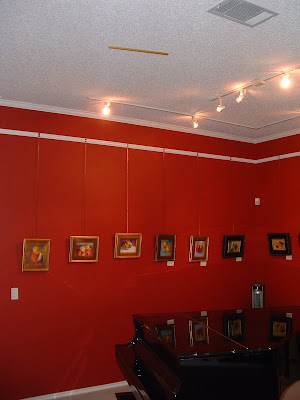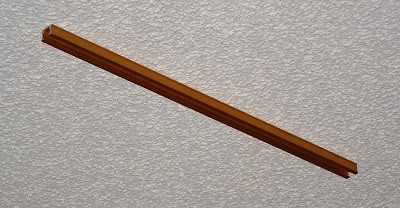Another ConcART event is in the books. And I'm happy to report it continues to be a great success. The numbers were down a little this year: about 35 people made it to the recital with another dozen showing up during the art show. But it's still a thrill to pack that many people into your living room for a piano recital and party. We're thinking of expanding a little next year and coming up with some creative additions to the ConcART template.
The calm before the storm
As usual, I began the party with a welcome and introduction before launching into the recital. My little stories before each piece were once again very warmly received. And I think this year I was more prepared than ever before, so the performances went very well. I was most worried about the Brahms (Hungarian Dance No.2) being messy, but it came off very clean. I had no problems with the Handel (Harmonious Blacksmith), and several people commented later that they liked this one a lot. The Corelli/Godowsky (Pastorale) offered the only real flub of the day, but I recovered pretty seamlessly. Of course it was at a spot that usually gives me no trouble, but that's the way things go. The trickier spots that I was concerned about were fine, and the performance was good. So overall, I'm very happy with this one. The Nin-Culmell (Muiñeira) went great. I don't think I could have played it better, and I heard several joyful outbursts at the end. As expected, the Schumann/Liszt (Widmung) was a crowd favorite. This piece was very well prepared and I was really able to put myself into the performance. The final piece (Falla's Ritual Fire Dance) turned out to be the second crowd favorite, which surprised me a little. It's a great end-of-program piece. Johanne confirmed to me later that the performances were all comparable to my practice performances, and that the tempos were all dead on. (One of my biggest issues is playing too fast when I'm nervous, which then causes other performance problems).
The art show was also a big success. Johanne sold eleven paintings. And the sales seemed a little more intense to me than past years. Many people had strong favorites and went straight to the office to make sure they got their first choice. This year we also offered CDs and DVDs of the first two ConcART recital programs for sale. We sold 26 discs. I was a little surprised (but happy) that the CDs were more popular than the DVDs. The ConcART-II CD was the biggest seller (10) followed closely by the ConcART-I CD (9).
Bottom line: I declare ConcART-III the most successful ConcART yet. Even with fewer people, we sold almost as many paintings (in fact, more per-guest), and the desire to buy seemed much stronger to me. Add in the disc sales and it's undeniable that our guests were very generous to us this year. Most importantly for me, the more I think back on it, the recital really was the best so far.
On to ConcART-IV!



 It has been played by
It has been played by 








